Building a safe online space for a vulnerable demographic
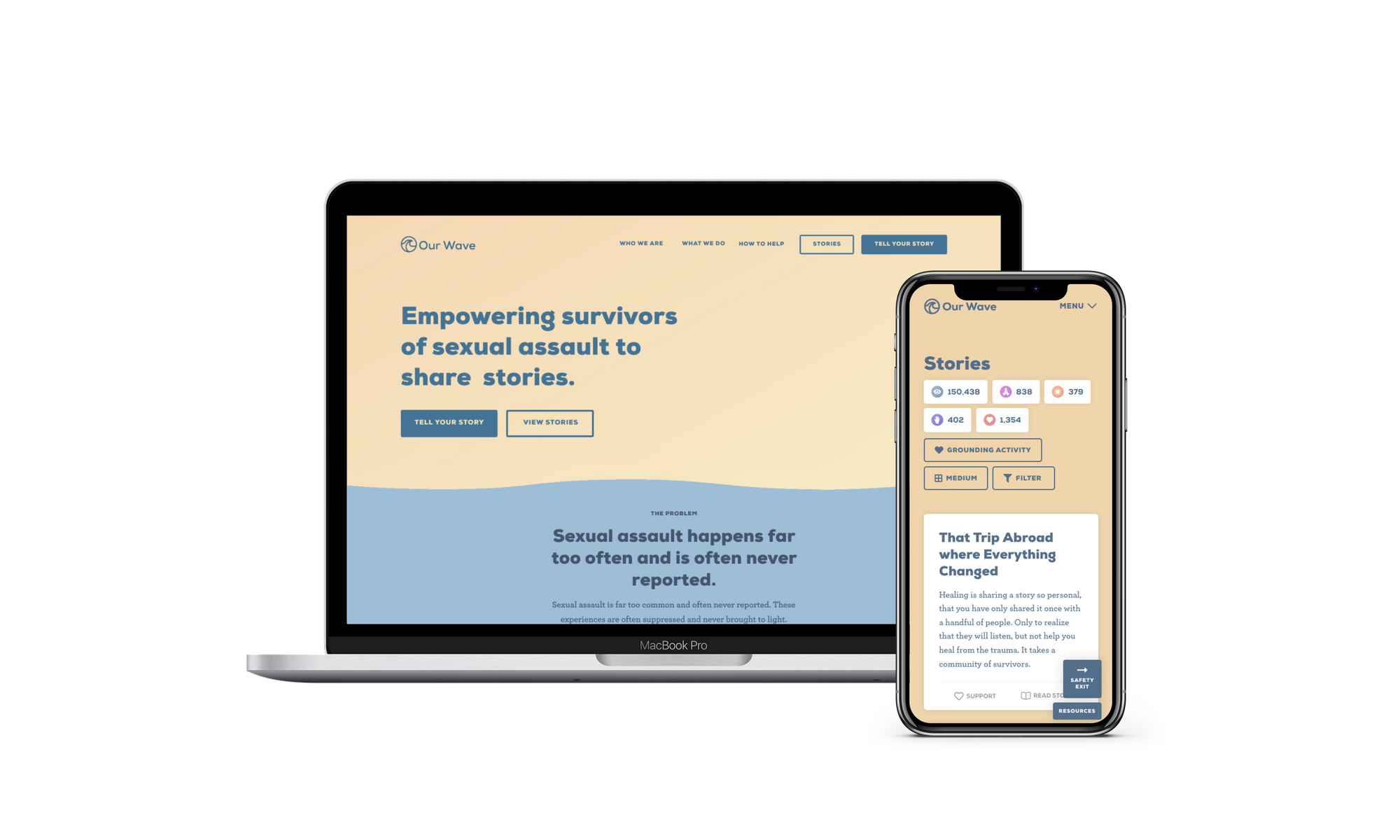
About this project:
This case study describes the process by which I helped Our Wave create a safe online space for survivors of sexual assault and domestic violence through primary and secondary research, as well as concept design and development.
Organization: Our Wave
My Role: Director of UX Research
Location: Raleigh, NC
Duration: June 2018 — June 2020 (2 years)
Tags: SME Interviews, User Interviews, Surveys, Styleguide, Wireframing, Low-fidelity Design, User Testing, Sketch, InVision, Hotjar, Google Forms, Figma
Jump ahead and see the final product ↑
What is Our Wave? 🌊
Our Wave is a 501c3 nonprofit dedicated to building an online platform where survivors of sexual assault can safely and anonymously share stories.
Vision - What we do
- Collect stories and build an empathetic community where survivors can be heard, believed, and supported
- Build a centralized story base to proactively deduce patterns between narratives
- Create plans of action with public and private partners to improve prevention strategies and create a wave of change
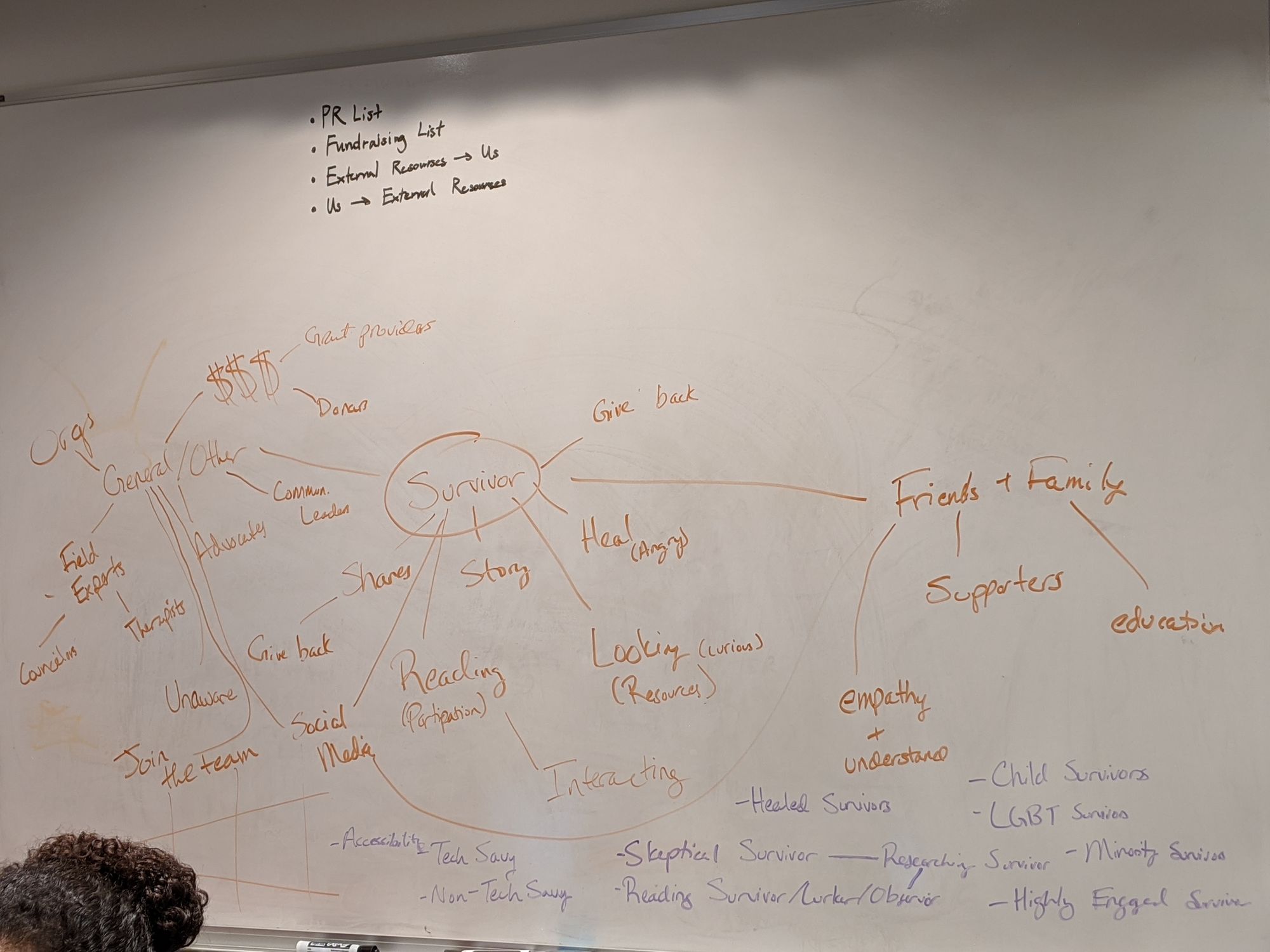
Mission - Why we do it
The organization was started in 2018 with the goal of providing individuals with a space where they might find common ground with others, and where they could speak about traumatic past experiences rather than internalize the associated negative emotions.
We help survivors find hope and connection on the path to healing:

Values - Who we are
We...
- Highlight Hope
- Foster Empathy
- Guarantee Transparency
- Build Community
- Empower Action
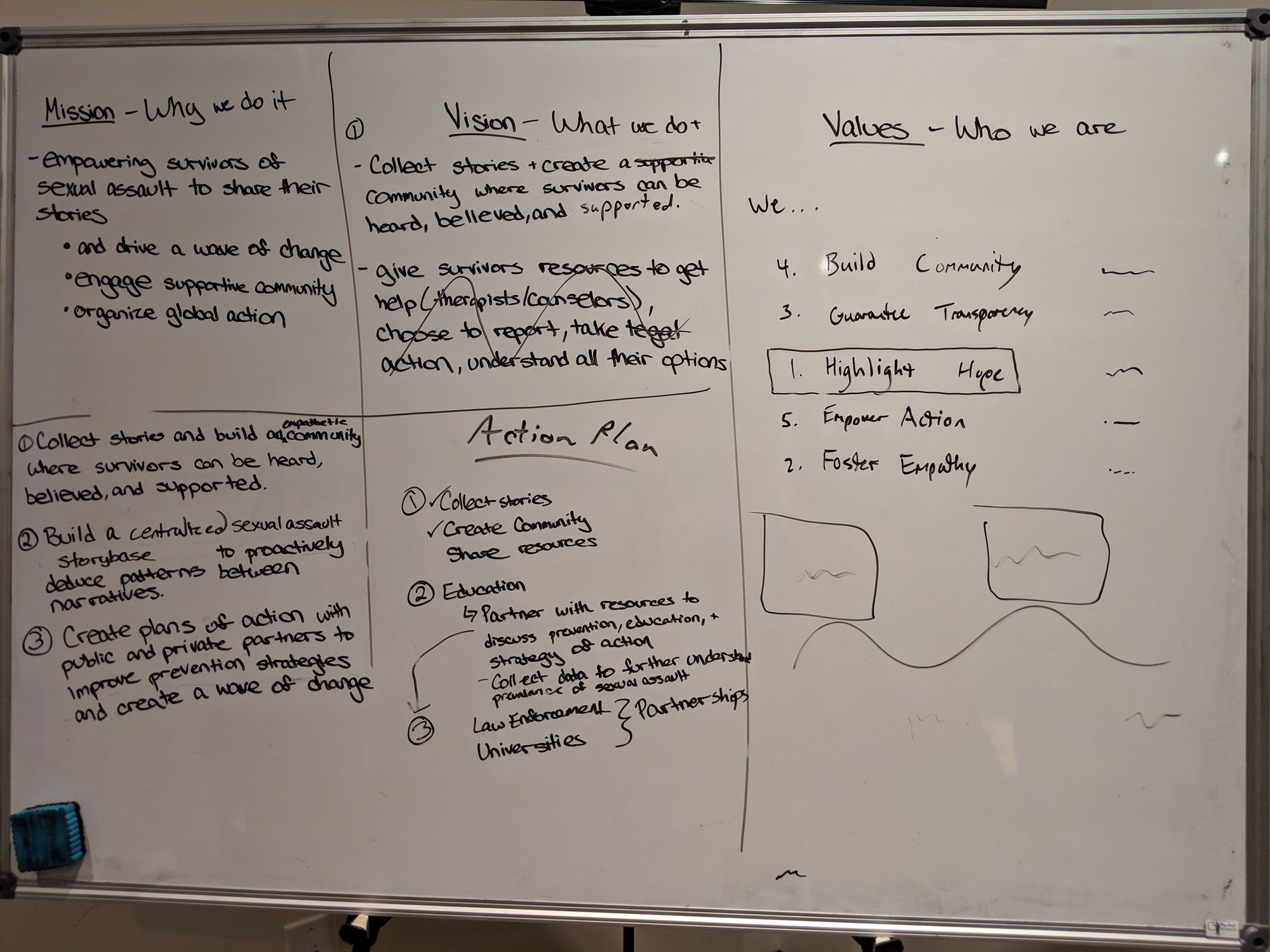
What needed to be done?
The founding team theorized based on intuition and personal experience that such a space could be helpful but also wanted to conduct a review of the current scientific literature to learn more about why social sharing was important to one’s healing process. We also wanted to start collecting data of our own to validate the need for the kind of community proposed, as well as to better define our organization’s position, voice, and visual identity.
What does science say about this? 🔬
The literature on social support-based healing
We initially set about building Our Wave because we saw friends and loved ones struggling to get closure after suffering through traumatic events. We wanted to bring together a community so that no one has to figure out the healing process alone. We also saw how difficult it is for someone to speak about this issue at all, much less publicly share a story about something so deeply painful and personal.
As we built Our Wave, we learned that this idea of social support as a means of aiding recovery after trauma is substantiated by a growing body of research.
Studies that have investigated the effect of environmental factors on post-traumatic healing have often found social support to be most correlated to positive life change. One such study conducted by the University of Minnesota’s Department of Psychology supports this idea and describes why social support is crucial:
Although there are potentially many reasons why sharing one’s story would help in the healing process, many studies corroborate a similar reason as the one described above: talking about your experience gives you the chance to express your natural emotions and allows you to reflect on the damage in a healthy way. Sharing stories and talking to other survivors about the traumatic events of the past can be considered an “active approach-oriented coping strategy:”
All of this to say; even though the events of the past may be difficult to think about and painful to revisit, opening up and sharing one’s story can help to provide a new perspective. And reading the stories of others will hopefully help to reassure survivors that no one is alone in this.
The relevant scientific literature on post-traumatic healing supports the idea that social sharing is correlated to positive life change and illustrates why providing a safe space for survivors could aid in recovery.
Our Wave’s Visual Identity 🎨
Creating a calming and hopeful aesthetic
Providing an outlet of comfort and support to survivors involves more than just building the proper technology. It requires building a tool that people feel comfortable using, that sends a message of hope, and that fosters a positive community. The team at Our Wave worked together to create a visual identity that we felt would effectively convey these values.
Because of the content’s sensitive nature and its potentially triggering effect on users, we took great care in choosing the colors and typefaces that would define the feeling associated with its presentation. We wanted our aesthetic to reflect our calming and hopeful message, as well as evoke imagery of sunrise and ocean waves.
Colors and typefaces used to design early versions of the website:

Engaging the Community 💬
Learning about potential users through surveys and outreach
The Our Wave team went about collecting survey data from online communities to accomplish four goals:
- Validate the need for a safe and anonymous story publication forum.
- Learn more about the behaviors of survivors post-trauma.
- Learn more about the willingness of survivors to share stories, and identify the platforms being used for this purpose currently.
- Better understand our potential user base by gathering information on demographics and self-identified social groups.
Due to the sensitive nature of the topic, the potentially triggering nature of the inquiry, and the requirement of complete anonymity among responders, the team took great care in creating and reviewing the survey. Through a process that involved consulting with clinical trauma specialists and survivor advocates, we were able to edit our survey through several iterations. The final version consisted of eleven questions that effectively addressed our four primary goals, while also remaining tactful, non-invasive, and anonymous.
After two rounds of surveys, we collected over 230 responses from survivors of varying backgrounds and social groups. Although I cannot share specific results in the interest of maintaining responder privacy and anonymity, we were successful in accomplishing our four data collections goals, as well as gathering additional feedback from the surveyed communities. We were also able to see firsthand how meaningful our work was to those who were looking for a space where they could be heard, believed, and supported.
The one-week results of our engagement with Reddit communities:

Designing the Web App ✍️
From initial concepts to a functioning site
After working on the idea for months, and talking through the various challenges that we faced concerning anonymity and sensitivity of the information, the team was able to settle on a core set of pages and essential features for the Our Wave website. The following are the designs created after working with the team to finalize these features.

Home / Marketing Page
Firstly, we needed a home page that had a clear call to action to the primary purpose of the application: to tell one’s story. The page also needed to have a secondary call to action to view the stories of others, in the use case that someone wasn’t yet ready to share but still wanted to be a part of the community. Other requirements were: a recognizable layout that made navigation simple and intuitive, sections dedicated to explaining our mission and our purpose, emphasis on safety and anonymity, and examples of what we do and what we do with the data we collect.
There were two other requirements of extreme importance: an ever-present ‘Leave Page’ button, and a dedicated space where the National Sexual Assault Hotline phone number is always displayed. The 'Leave Page' button remains in the bottom right of the user’s screen and allows one to instantly exit to an innocuous shopping site. The necessity behind these last two features is due to the possibility that some of our users may be in a situation in which they need immediate help or in which they do not want it known that they are sharing their story.

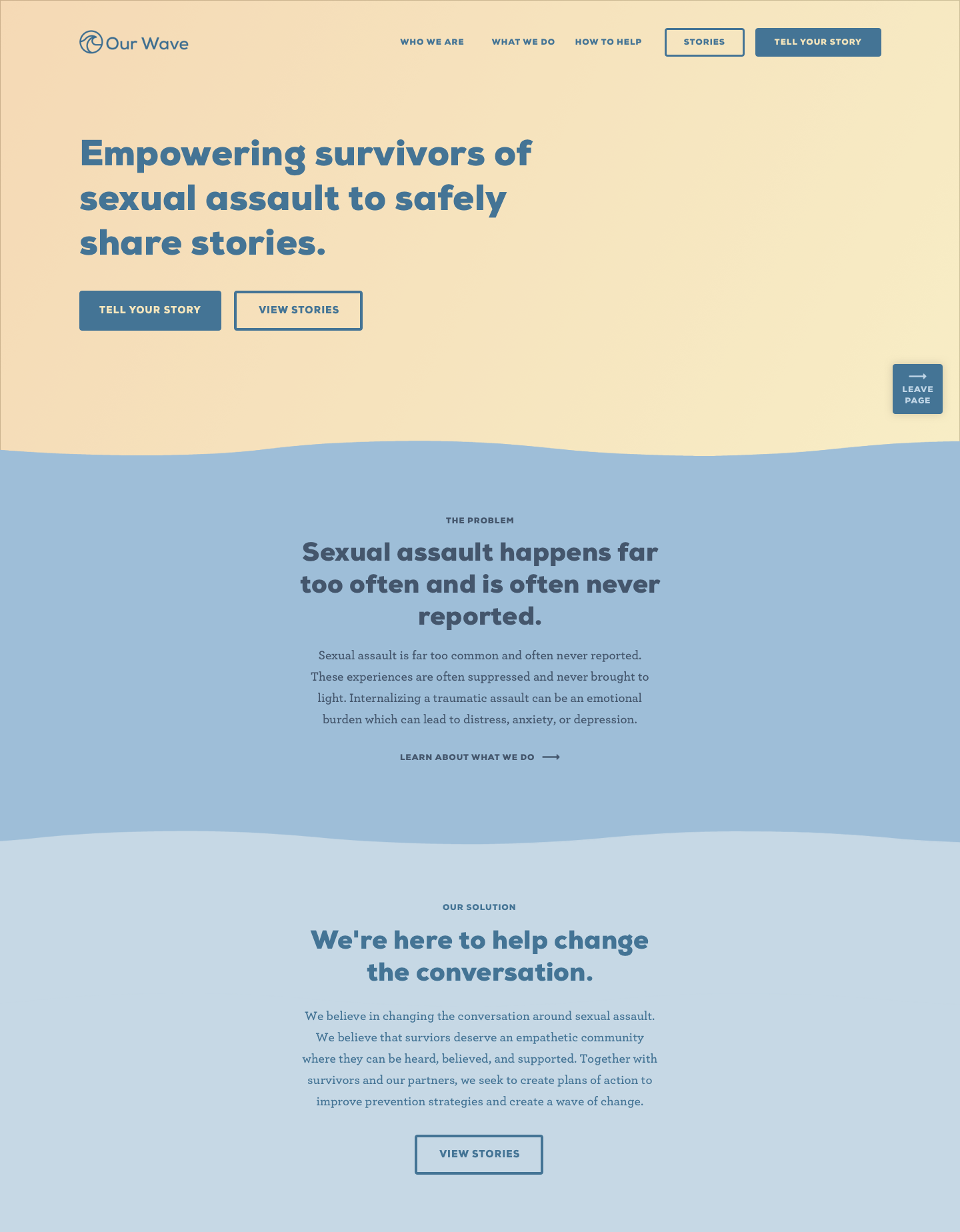
Home page
Tell Your Story
Secondly, we needed a page that would allow users to submit a story. In order to reduce stimuli and make the experience as softened as possible, we decided to remove the standard header navigation and replace it with a hovering security message that would serve as a reminder that the user would stay safe and anonymous and that their data would never be at risk.
We were careful to create messaging that was unassuming and reassuring to someone who was potentially writing about a deeply painful and personal experience.
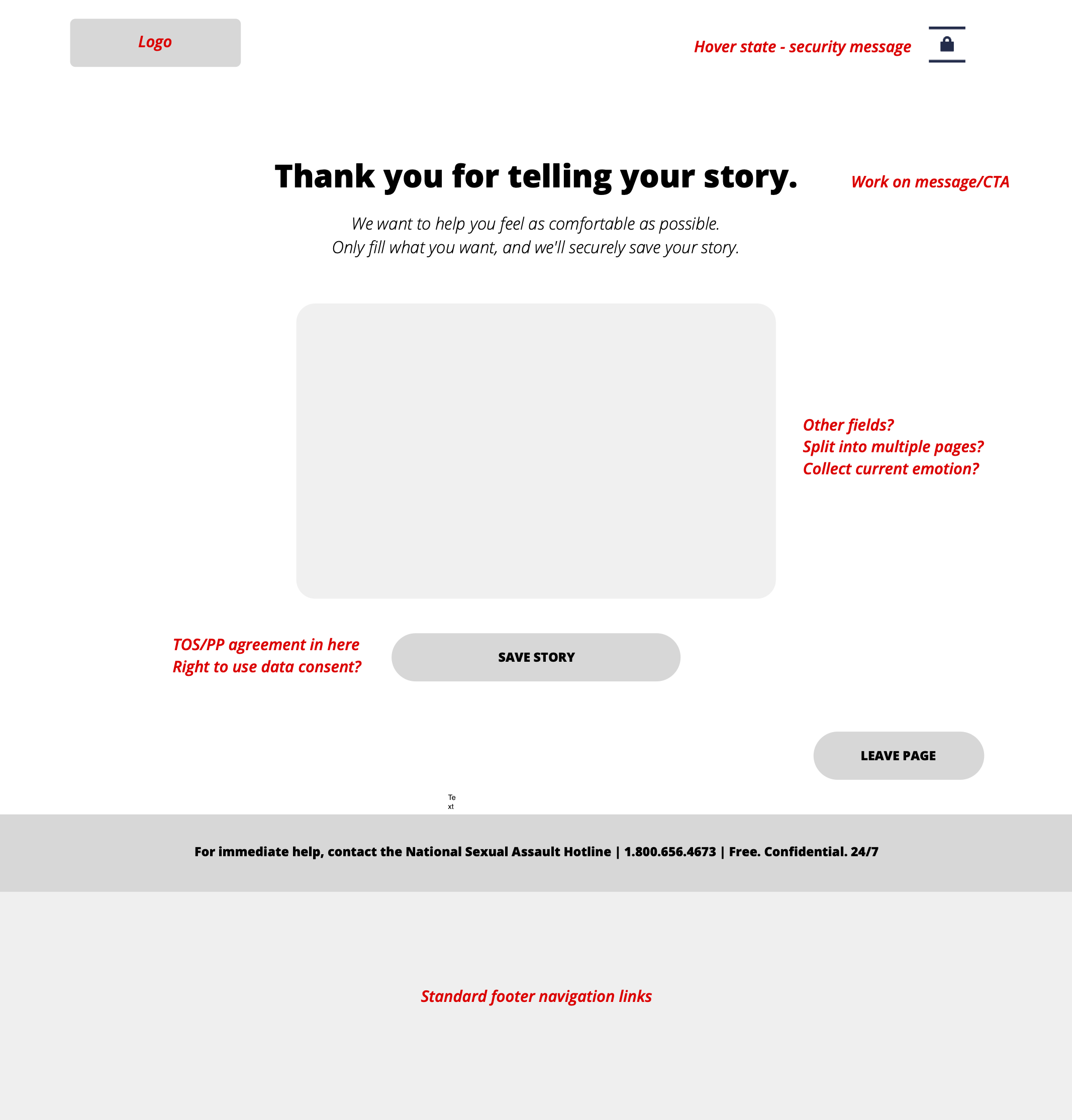
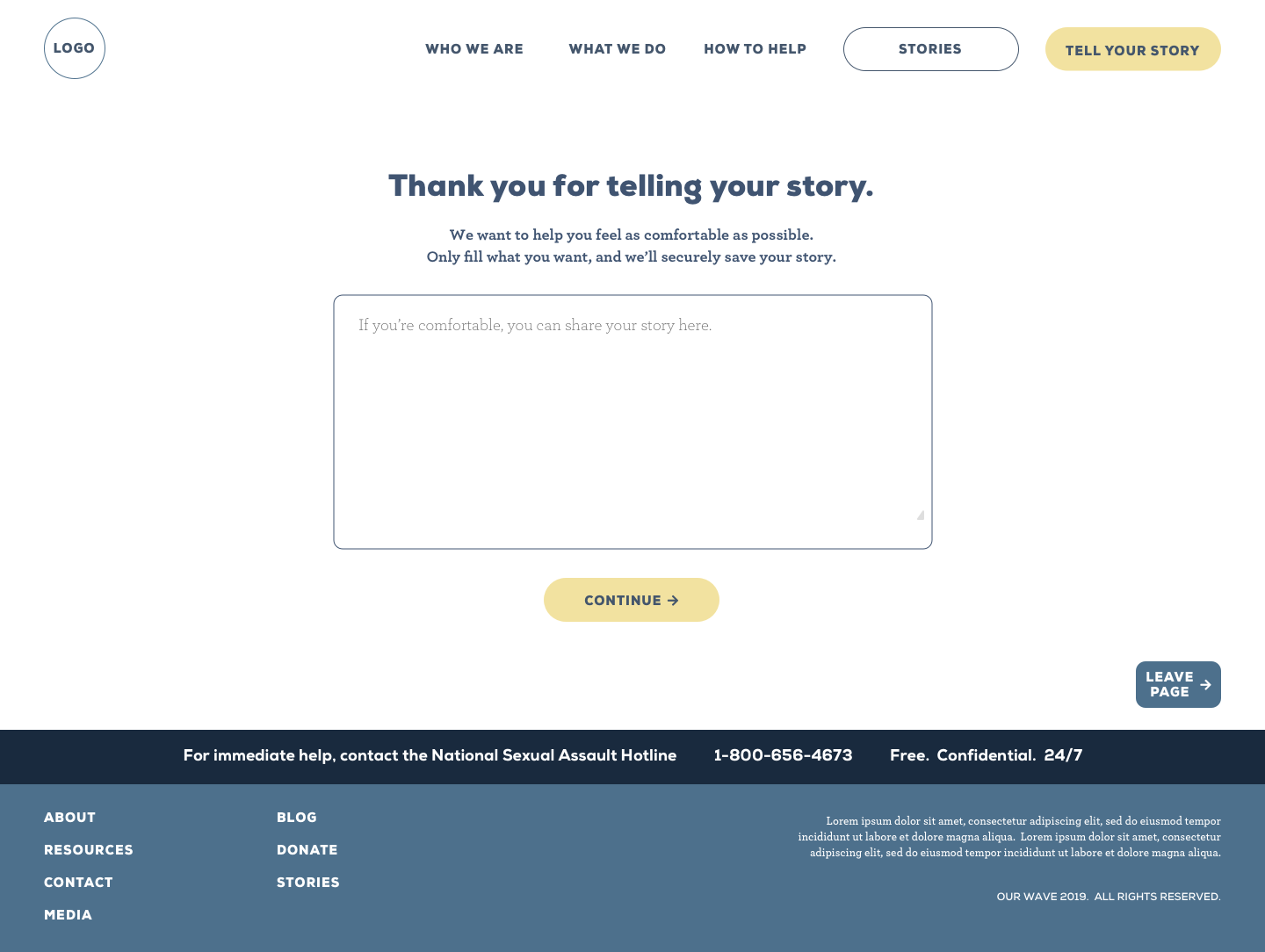
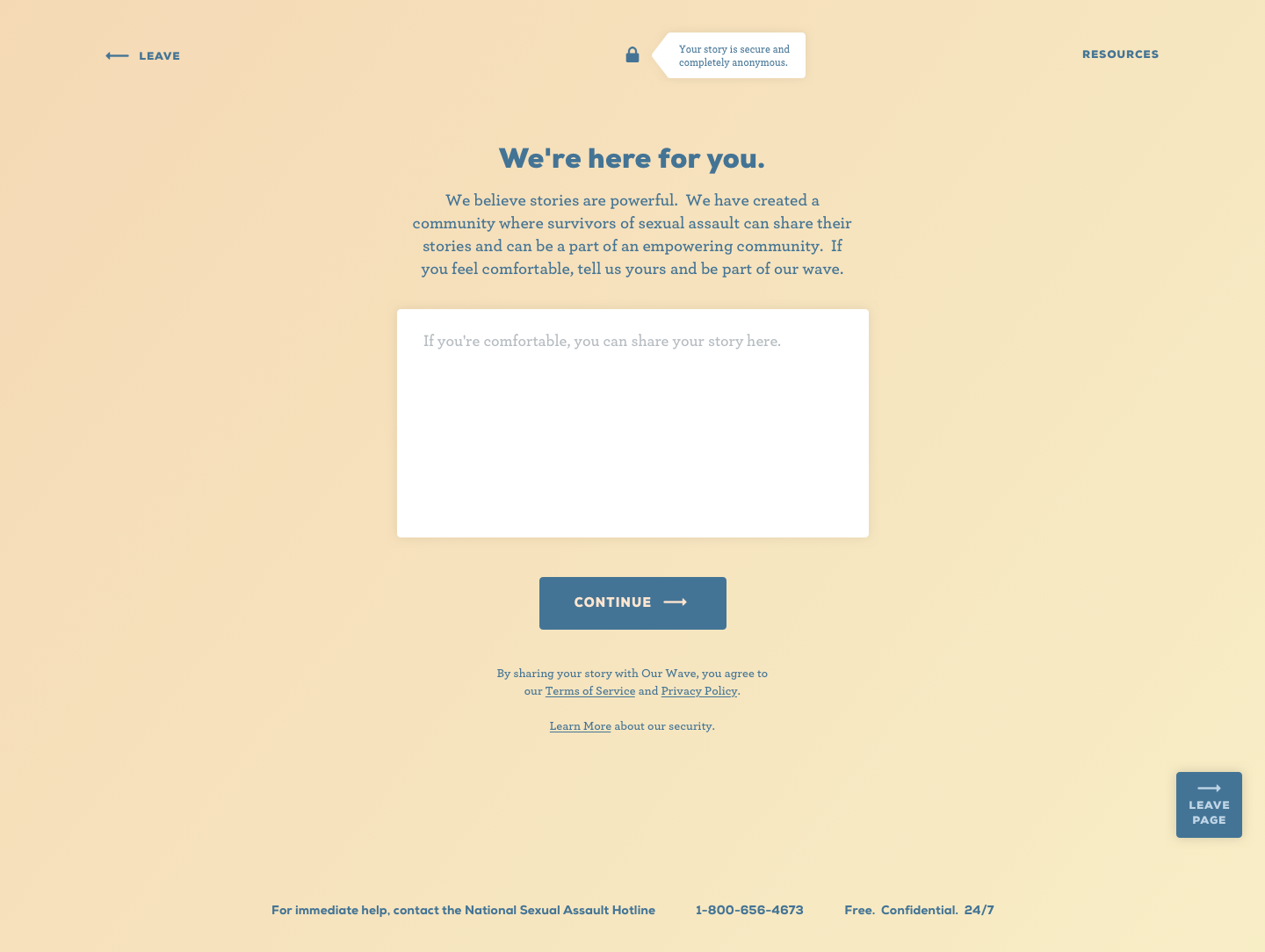
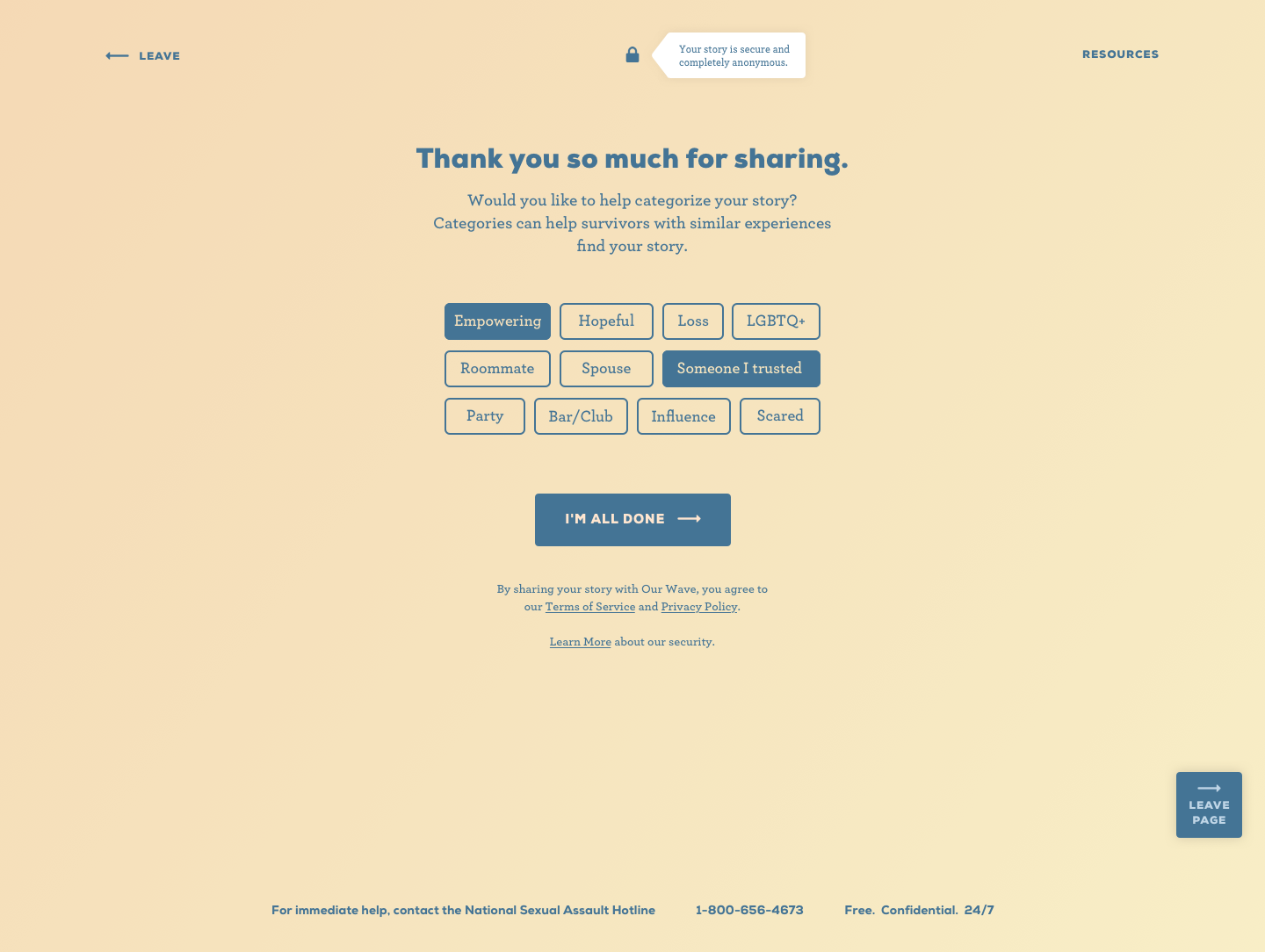
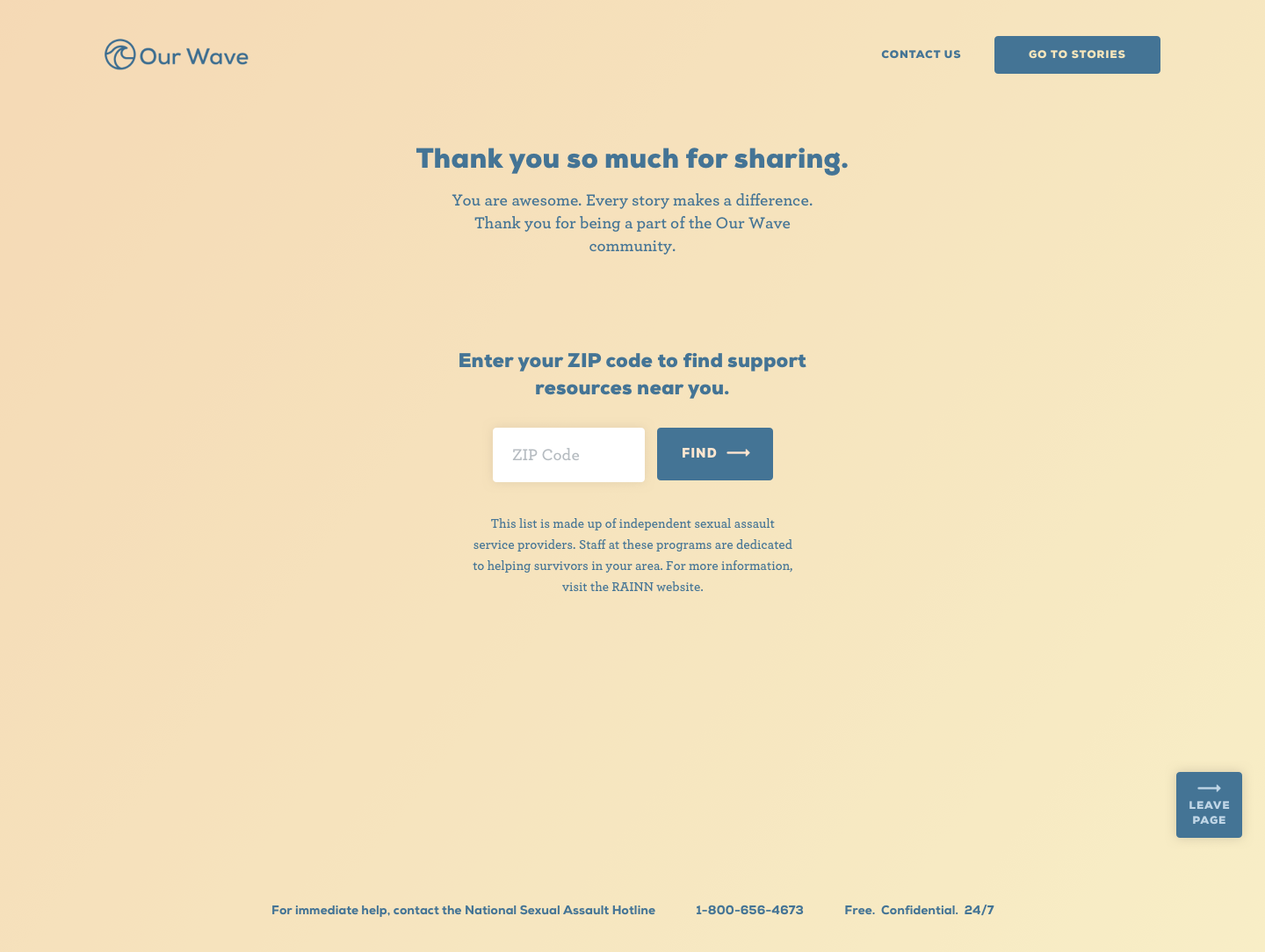
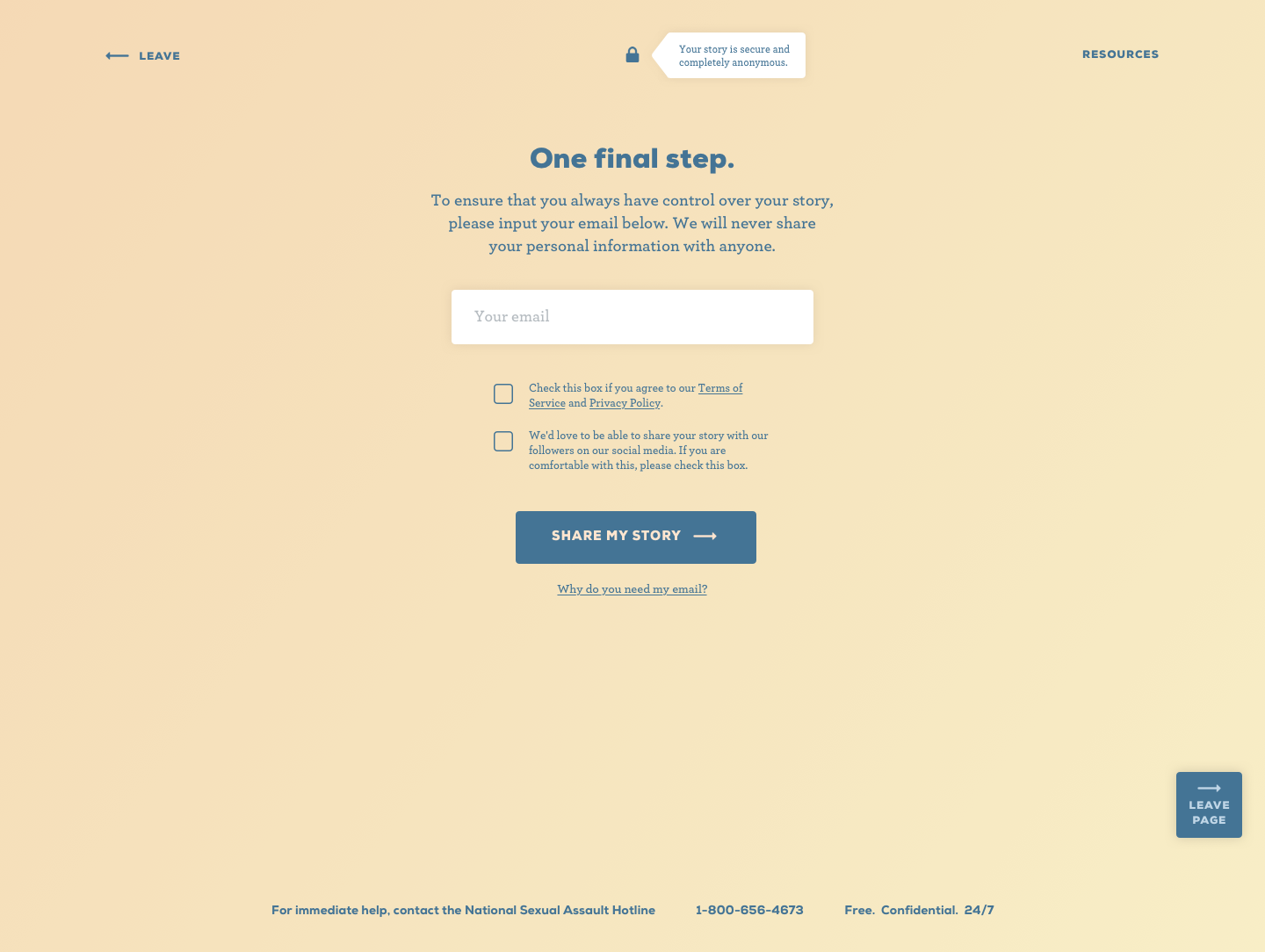
Tell Your Story pages
Browse & Read Stories
The last page included in the initial set of wireframes was the main stories page. This would serve chiefly as a means for users to browse posted stories and possibly react to them. At the time the wireframes were made, the team had yet to decide whether or not to include a full story or just its beginning on this page. It was later decided that only a small excerpt would be shown here, and users could select the story to open it up in full in its own detail page, where the user could then add a reaction. It was also undecided at this point in time what kind of system would be used to search, filter, or tag stories. The team agreed it would be useful to be able to categorize to an extent, but we wanted to be careful to avoid creating a system that could be used to identify a place or time. We also wanted to stay cognizant of terms that could be triggering to users.

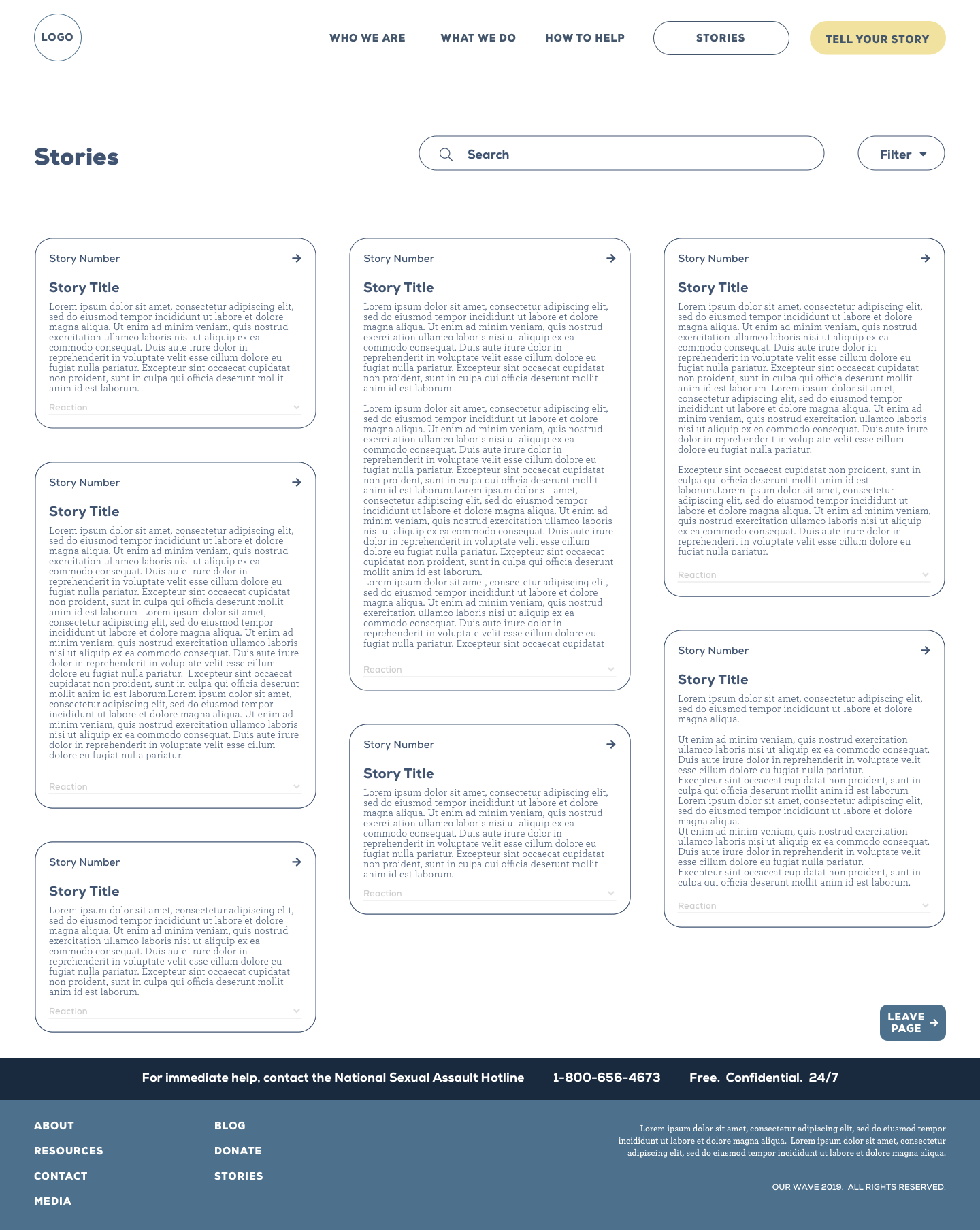
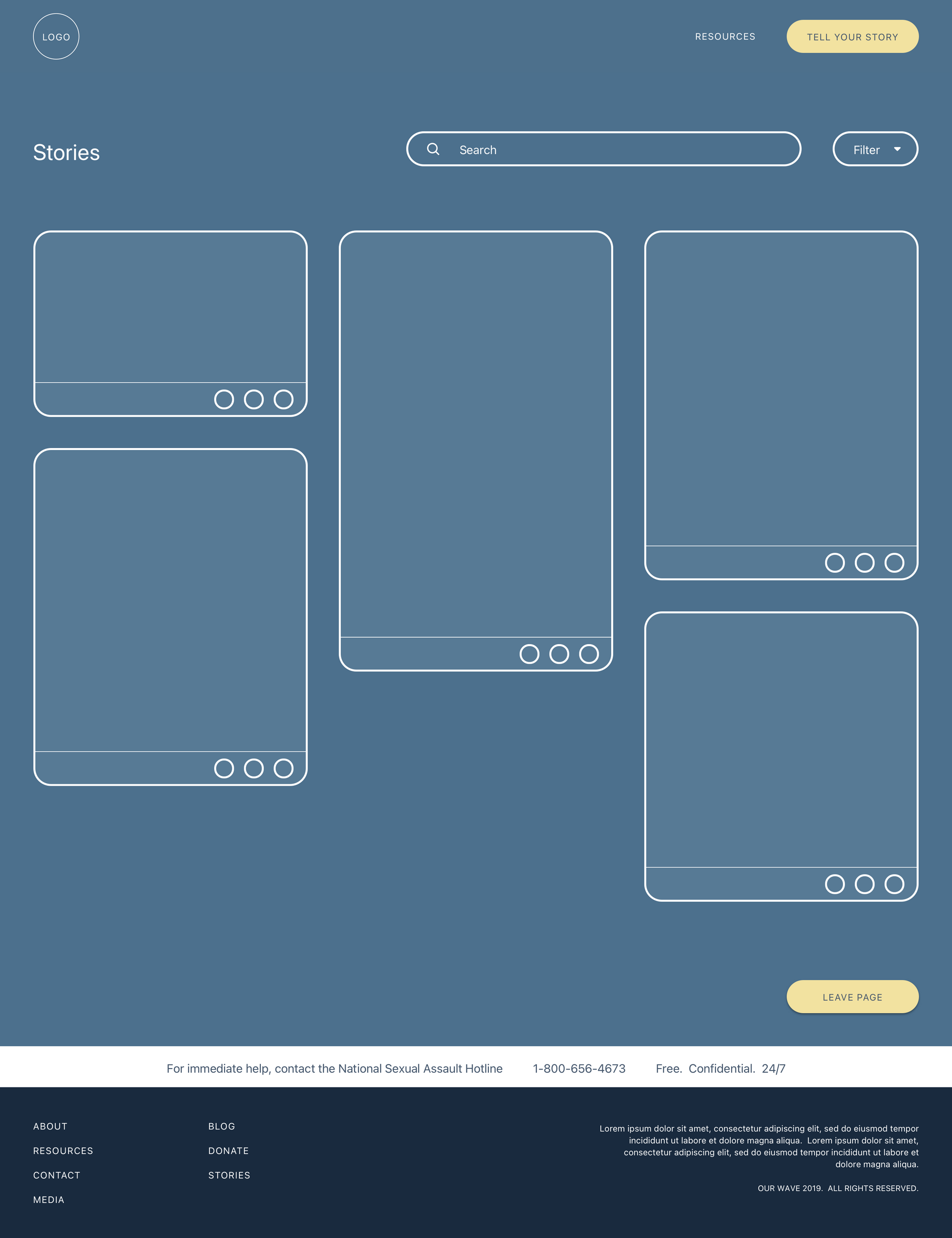
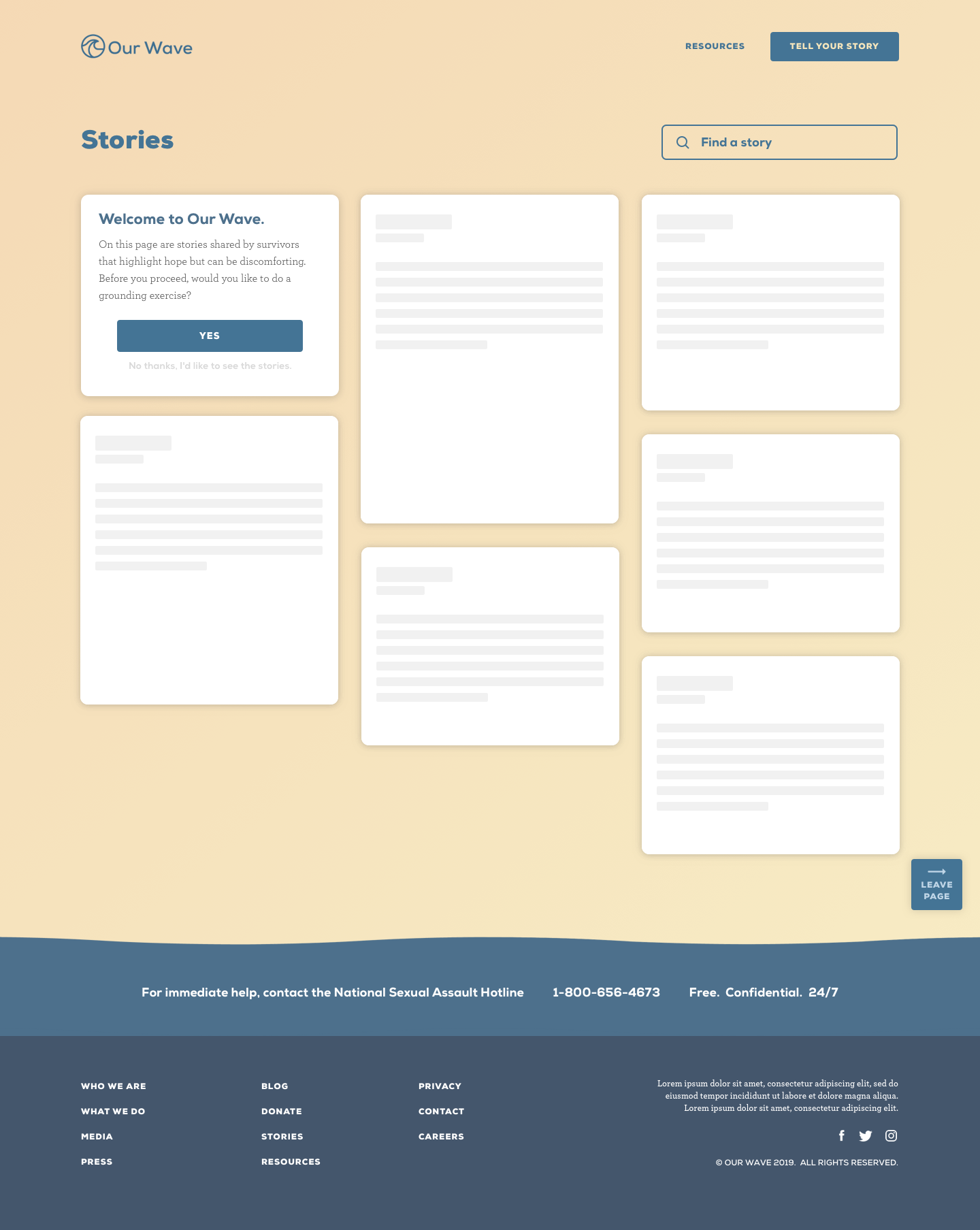
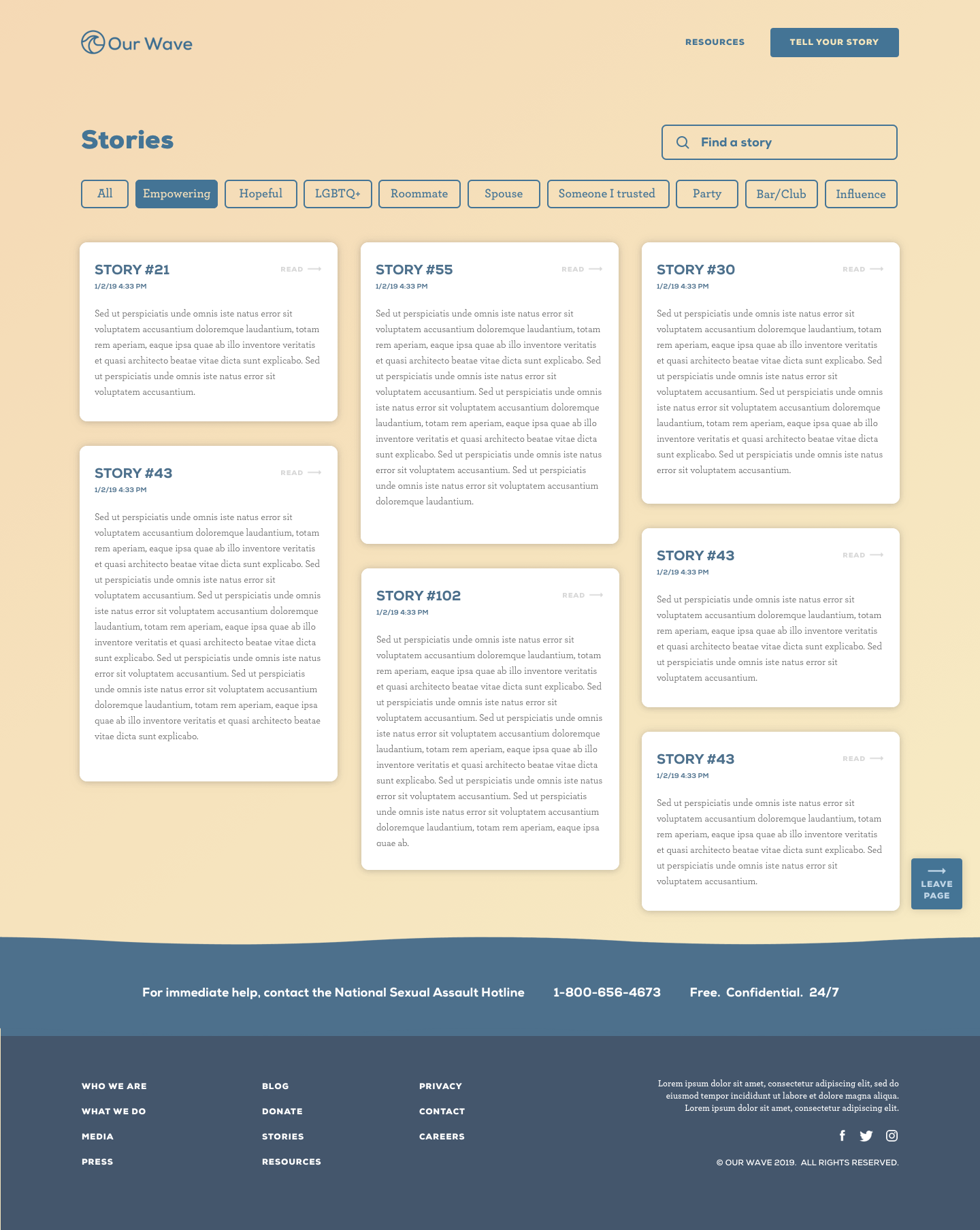
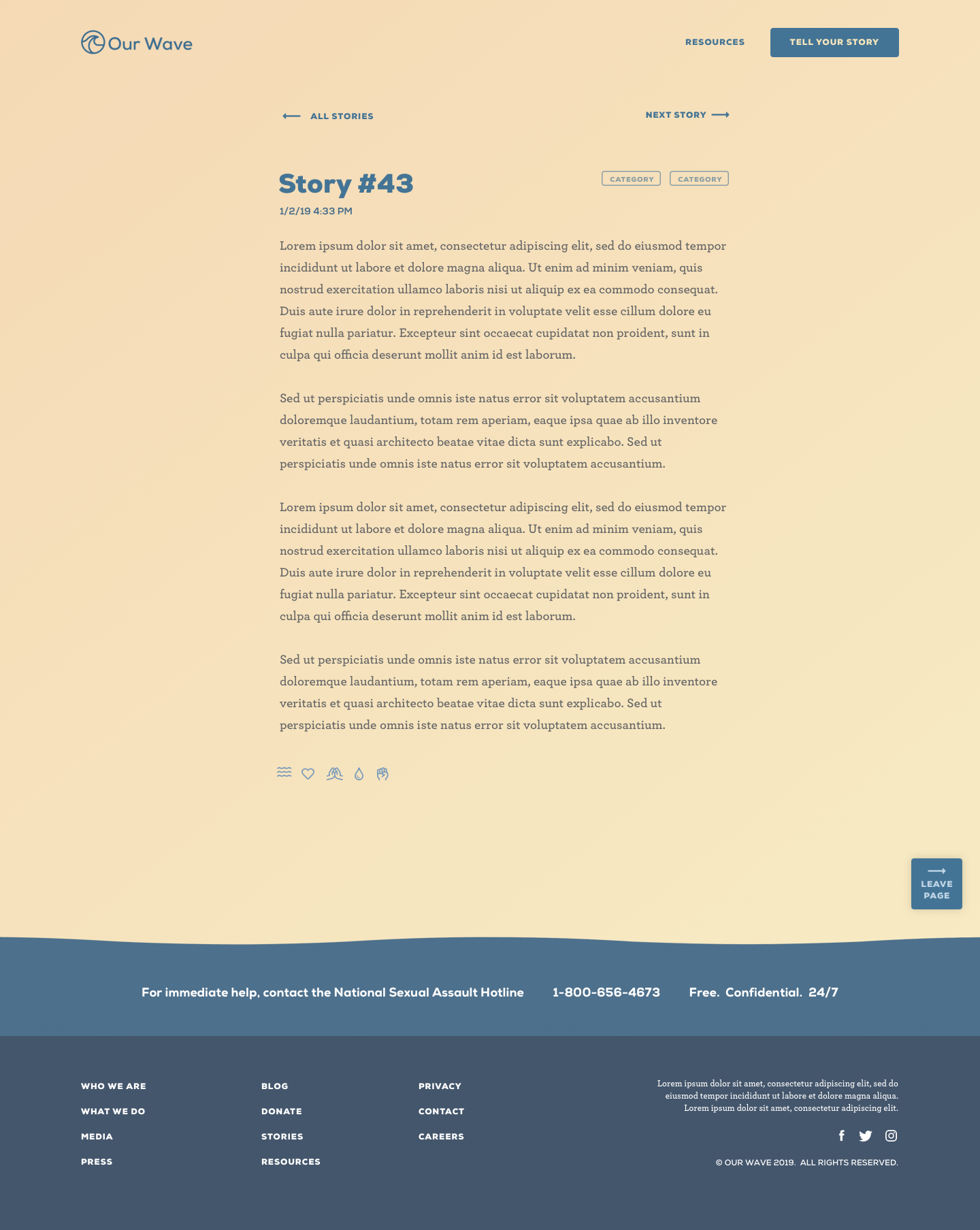
Browse & Read Stories pages
Clickable Prototype
View an interactive version of the screens above
Our Impact So Far 🌎

- Over 300 stories posted from 20+ countries
- Over 54,000 story views
- Over 1600 supportive interactions with stories
- Partnerships with:
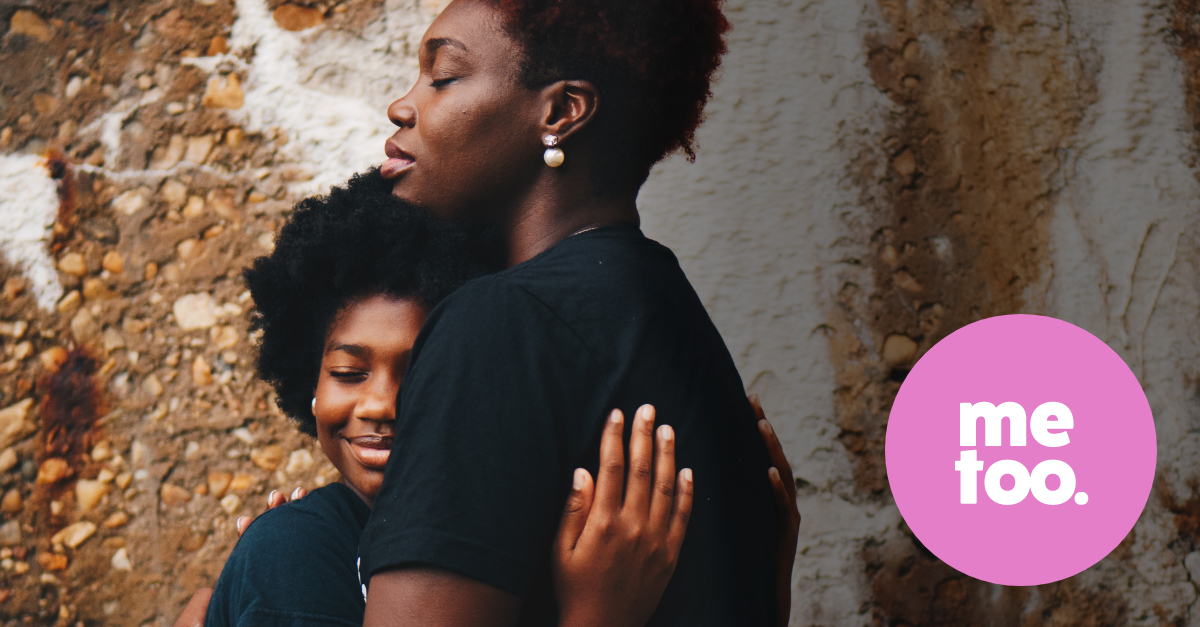
Me Too

Unapologetically Surviving
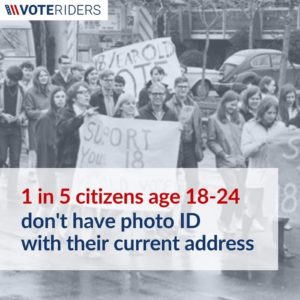
End Rape on Campus
The Body

It's On Us
See the work in action at OurWave.org

References 📑
- Cordova, Cunningham, Carlson, & Andrykowski. (2001). Posttraumatic growth following breast cancer: A controlled comparison study. Health Psychology, 20, 176–185. [PubMed] [Google Scholar]
- Frazier, Tashiro, Berman, Steger, & Long. Correlates of levels and patterns of positive life change following sexual assault. Journal of Consulting and Clinical Psychology, 72, 19–30. [PubMed] [Google Scholar]
- Rosenthal, M. Z., Hall, M. L., Palm, K. M., Batten, S. V., & Follette, V. M. (2005). Chronic avoidance helps explain the relationship between severity of childhood sexual abuse and psychological distress in adulthood. Journal of Child Sexual Abuse, 14(4), 25–41. [ResearchGate]
- Whiffen, V. E., & MacIntosh, H. B. (2005). Mediators of the link between childhood sexual abuse and emotional distress. Trauma, Violence, & Abuse, 6(1), 24–39. [PubMed]
- Draucker, Martsolf, Ross, Cook, Stidham, & Mweemba. (2009). The essence of healing from sexual violence: a qualitative metasynthesis. Research in Nursing & Health, 32, 366–378. [PubMed] [Google Scholar]
- O’Leary, Alday, & Ickovics. (1998). Models of life change and posttraumatic growth. In Tedeschi, Park, & Calhoun (Eds.), The LEA series in personality and clinical psychology. Posttraumatic growth: Positive changes in the aftermath of crisis (pp. 127–151). [Google Scholar]
- Schaefer & Moos. (1998). The context for posttraumatic growth: Life crises, individual and social resources, and coping. In Tedeschi, Park, & Calhoun (Eds.), The LEA series in personality and clinical psychology. Posttraumatic growth: Positive changes in the aftermath of crisis (pp. 99–125). [Google Scholar]








